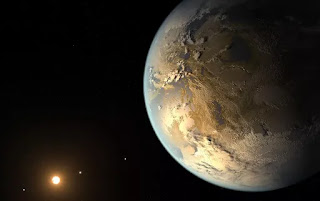Image: NASA Ames/SETI Institute/JPL-Caltech.
Joel Kontinen
Astronomers have discovered more than 4,000
exoplanets, or planets outside our solar system, so far. even the planet that
most resembled the Earth, is not habitable,
For example, planet KELT-9b is so hot that its
atmosphere is constantly melting. The darkest known planet, TrES-2b, has an atmospheric temperature of 980
degrees Celsius or1,800 degrees Fahrenheit. On the other end of the
inhospitable spectrum is GJ 433 d, whose discoverers described it as the coldest Neptune-like planet ever
discovered.
However, according to evolutionists, at least two dozen planets outside the solar system might be better for life than Earth,
These planets are just a
little older, a little wetter, a little warmer and a little larger than Earth
is, researchers wrote Sept. 18 in the journal Astrobiology. All of these factors could
mean that some of these planets are the best places to search for
extraterrestrial life.
"We have to focus on
certain planets that have the most promising conditions for complex life.
However, we have to be careful to not get stuck looking for a second Earth
because there could be planets that might be more suitable for life than
ours," University of Washington astrobiologist Dirk Schulze-Makuch said .
It's not
possible to evaluate distant exoplanets on all these criteria. There is no way
to calculate an exoplanet's landmass area, for example, much less how it's
distributed.
So, this research
did not come up with “more hospitable than Earth” criteria. Even if a super Earth
was found, life has to be planted there – by God.
Source:
Pappas, Stephanie, 2020. Planets more hospitable to life than Earth may already have been discovered. Live Science 10 0ctober.















